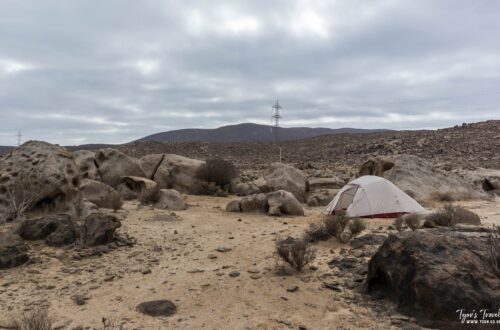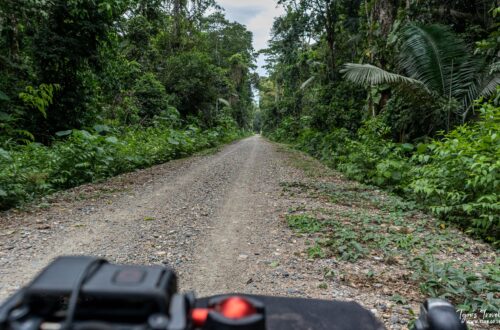This week I dropped off my bicycle as a shipping company office in Jakarta to have it sent to Jessica’s house in Borneo, I was originally going to send it by cargo plane but it was half the price to send it by ship, although the ship could take a while. Hopefully it will arrive here in the next few days, but I plan to head over the border into Malaysia so that I can extend my visa when I come back into the Indonesian part of Borneo. On Monday I got a lift to the airport from my host in Jakarta and flew to Balikpapan in eastern Borneo, where Jess met me at the airport and took me to her parents house. The only problem I have now is that I originally took my bicycle to the cargo office thinking that I would have my bike the next day, so my toiletries and the battery charger for my camera are now stuck with my bicycle and I wont get them for another week or so.
On Tuesday we got straight into my plans for Borneo, we headed out to an Orang-utan sanctuary in the forest north of Balikpapan, where rescued Orang-utans are taken and gradually prepared for release into the wild. One thing I did think was strange was that the sanctuary give the females contraceptive injections so that they apes can have their mating season without producing babies. This is because they feel that an ape born in captivity could have issues going from the restricted area they are born in, to the freedom of Borneo’s forests. Apparently the calculation for the amount of contraceptive drugs to use is tricky, because when I arrived there were babies. The sanctuary is also home to a number of Sun-Bears, the staff said that the conditions they were held in were because of a lack of funding, but I still was a little uncomfortable seeing them in cages. Apparently they have 58 hectares of land ready to home the bears, but the funding has only allowed them to fence off three hectares, so the adult males are being kept separately in cages to stop them fighting each other.
I was hoping I could see some Proboscis monkeys in the same forest as the Orang-utans but the staff told us they don’t live in the area, but if we travelled about an hour to the north, we could arrange for a fishing boat to take us up the river to see them. So we headed off to black river, which isn’t black anymore because of all the mud in the water caused by the illegal coal mines close by. We arrived a little early, the monkeys don’t like the sun, so will only come out around dusk. But we rode up and down the river and eventually spotted a few groups of Proboscis monkeys. I tried for ages to get a good shot of the large males with their huge noses, but they wouldn’t face the camera, just turn their backs on us or stay partially hidden behind branches and leaves, luckily I got some decent video footage.
This weekend we headed off for a couple of trips with Jessica’s family, on Saturday we drove to a canopy walk and on Sunday we went to visit a Bornean tribe. But just as in most of the tribes you can visit in Africa, they aren’t really living like tribes anymore. In Africa the Masai and Himba tribes have villages where they go during the daytime to show tourists how they used to live traditionally. But here in Borneo the tribe just has a large traditional hall where they dress up and dance every Sunday for tourists to come and take pictures. The eldest and youngest members of the tribe are dressed up so that people can pose and take pictures with them at a rate of $2.50 per picture. One particular old guy was sat on the steps of the traditional hall and people sat with him to take pictures, as I watched I couldn’t help but imagine a bitter internal monologue where he reflects that the clothes he wears used to mean something, a mark of respect, but now his family dress him up and sit him there as a tourist attraction every week. I am making this sound like a terrible experience, but it wasn’t at all. It is only like that if, like the only other European tourist I saw there, you expect to be visiting an actual tribe like you have seen on documentaries. Those tribes are out there, but you can’t visit them so easily as the tourist villages. This is because they are protected, the more interaction they have with tourists coming and taking pictures of them, the more they become the same as the tourist villages. The Indonesian tourists who visited the tribe were more than happy to see the dances and see the traditional clothes, the same way we would go to a museum or re-enactment. The village has an interesting culture and history that people are interested in, it gives them a source of income and each week the village hall is full of domestic and international tourists, I really don’t see a problem with it at all.


